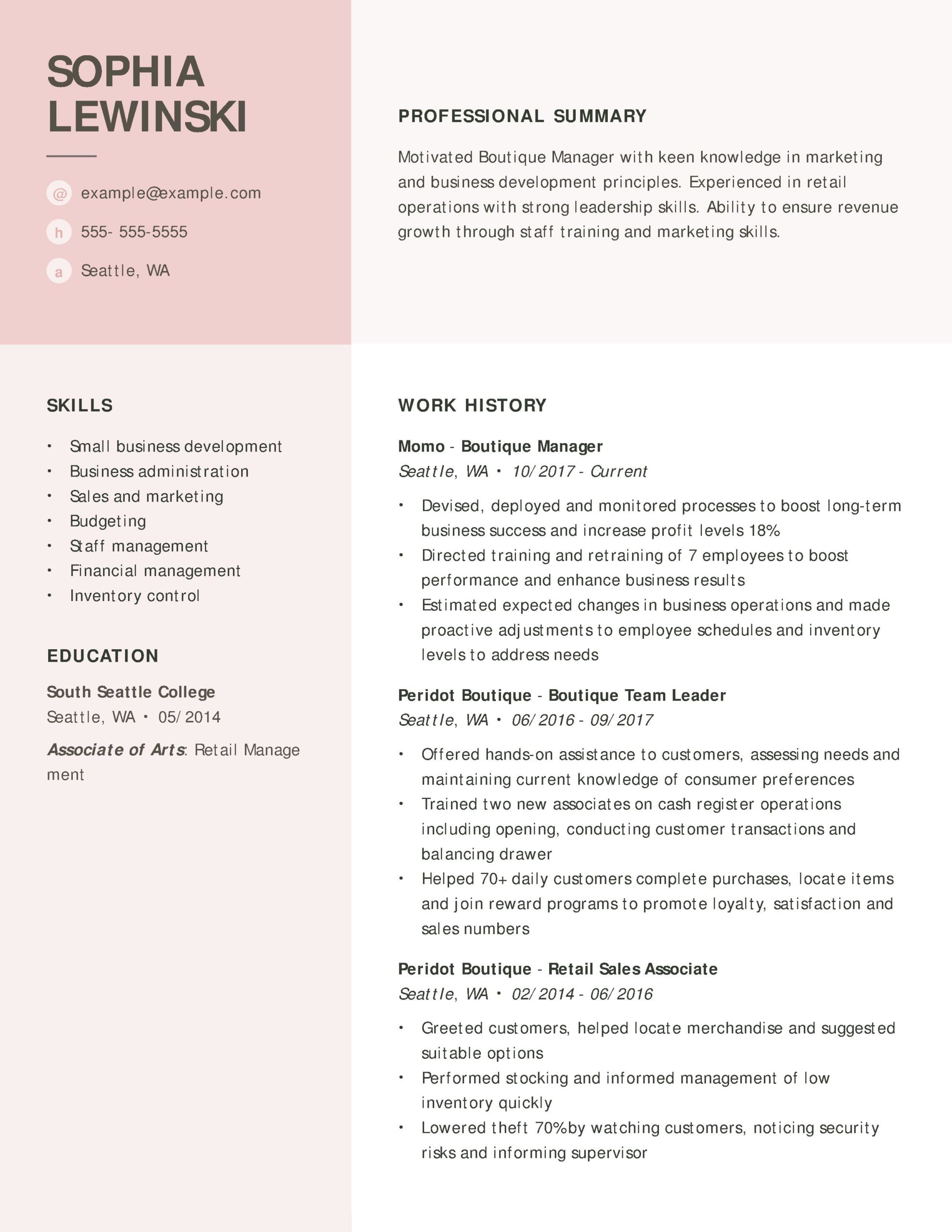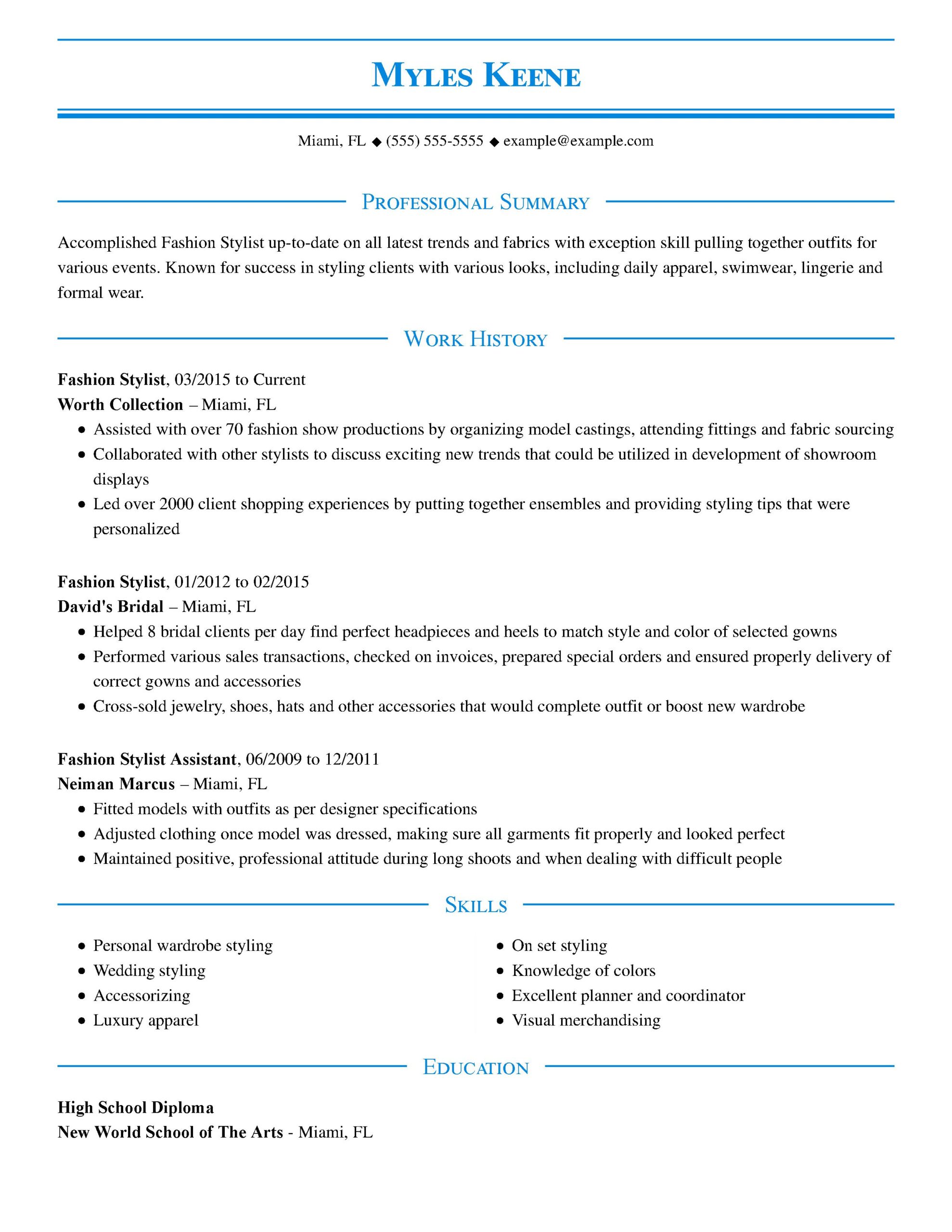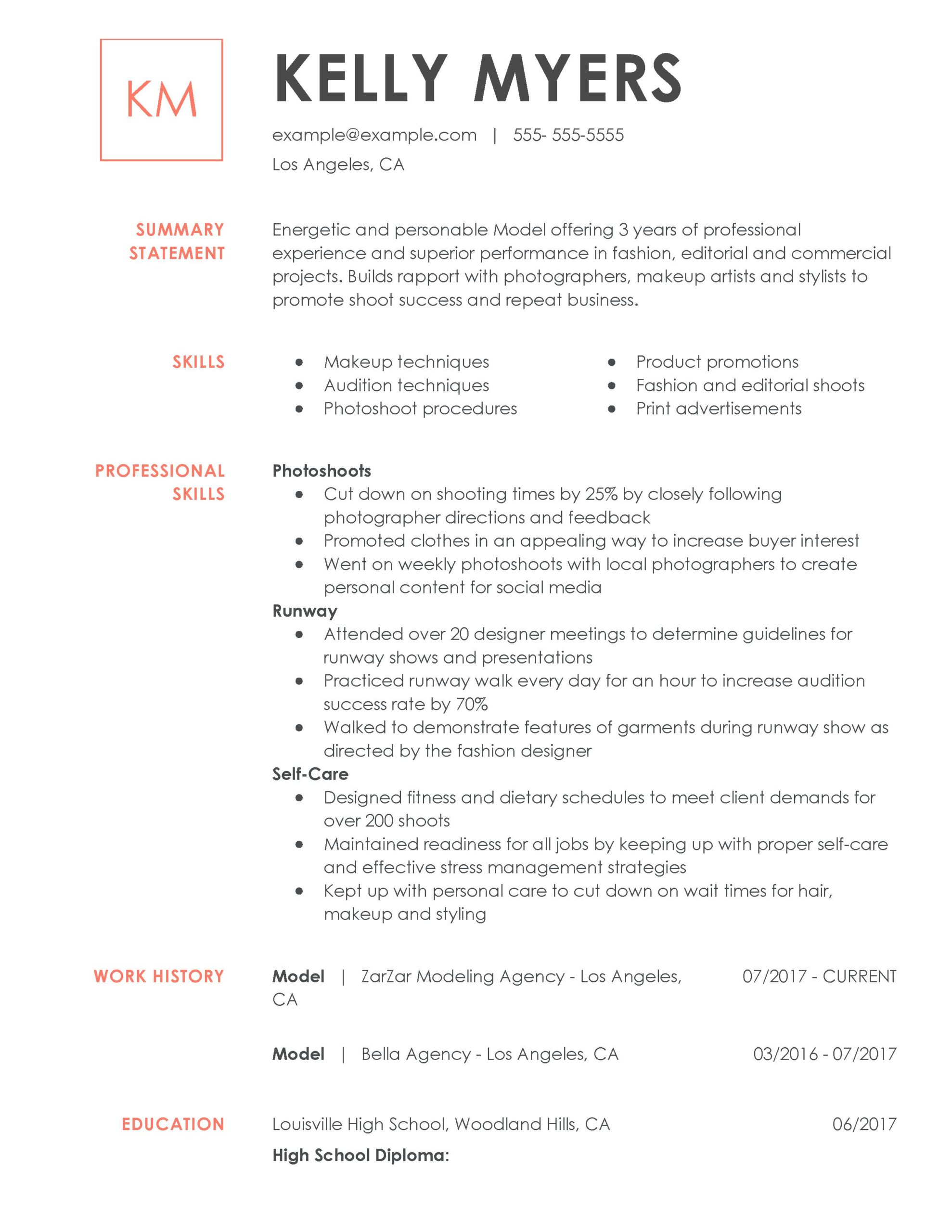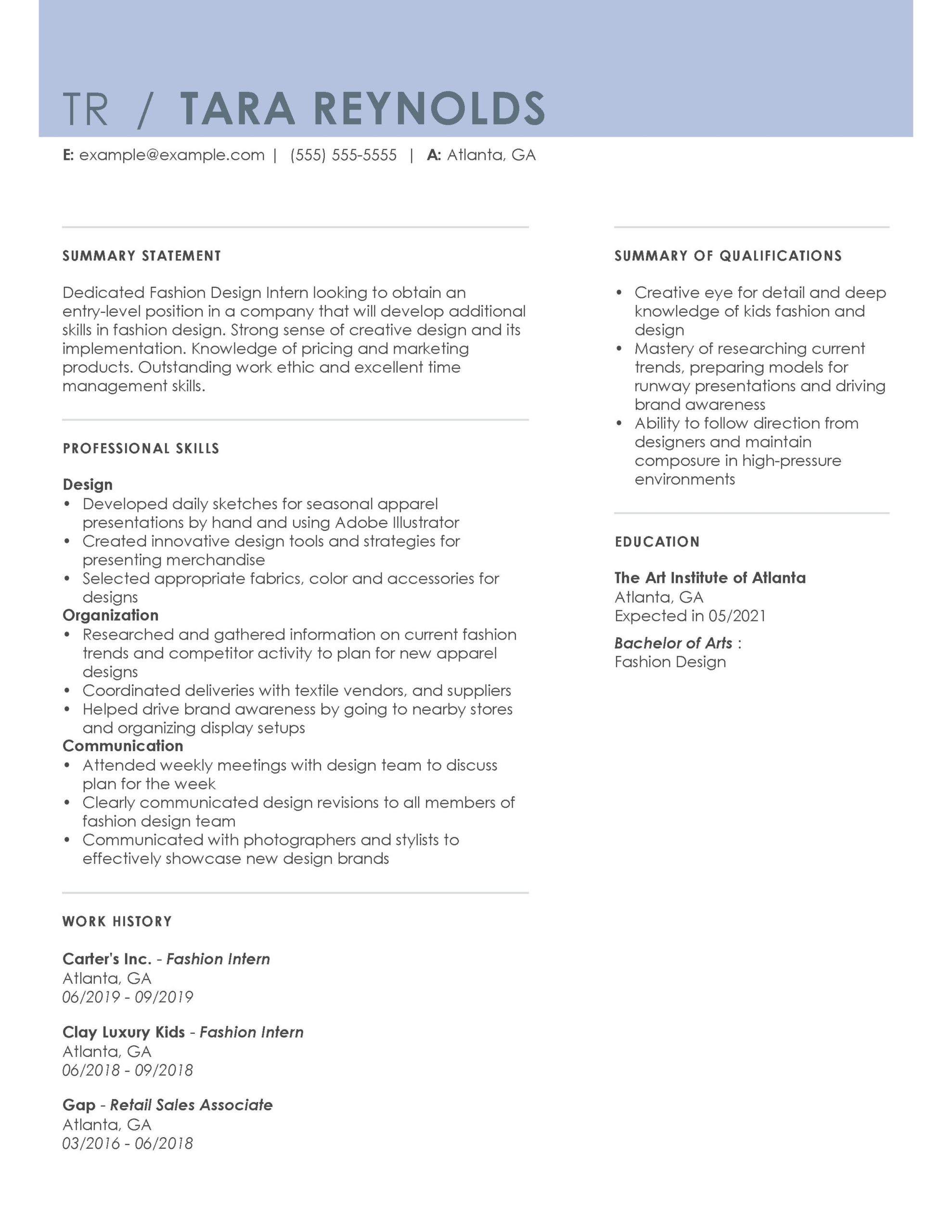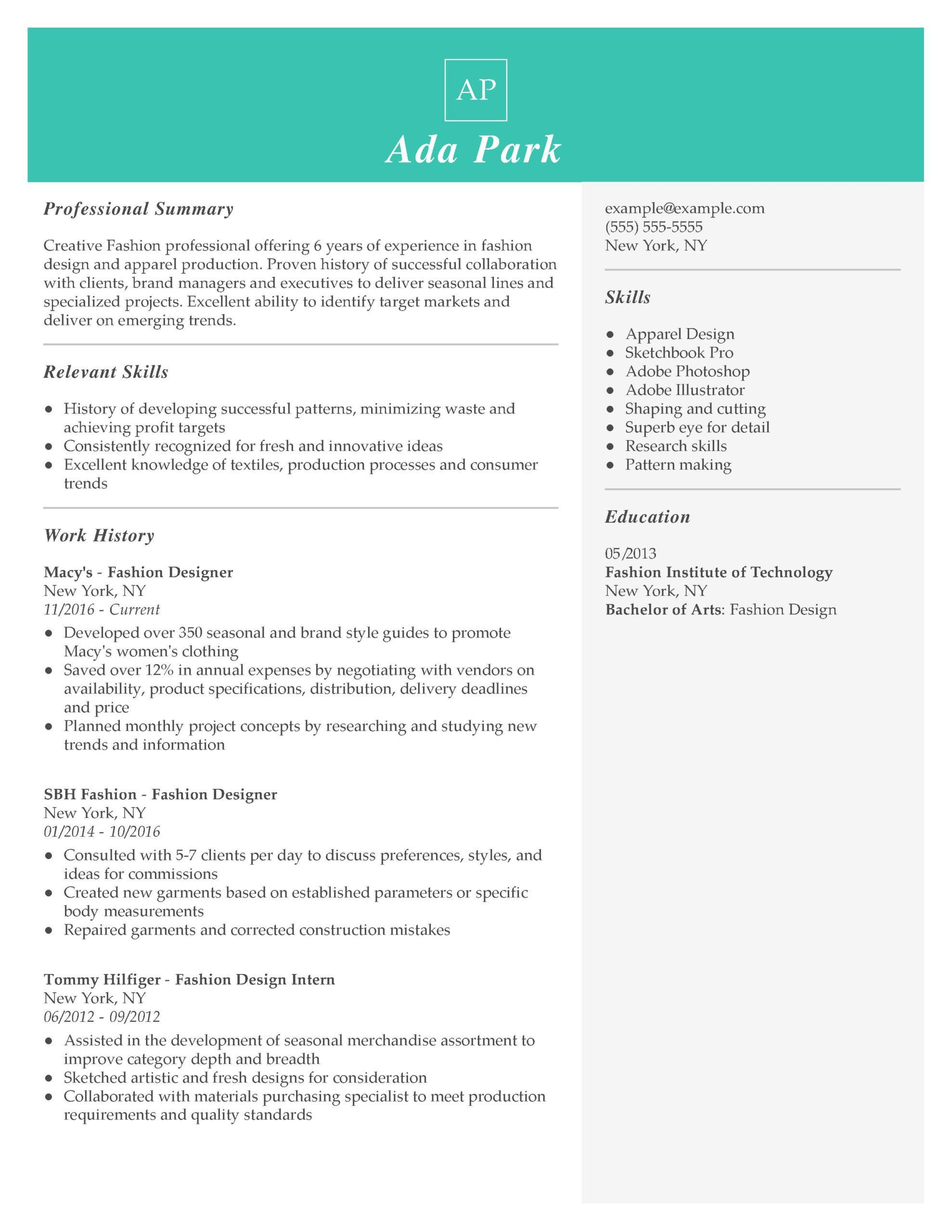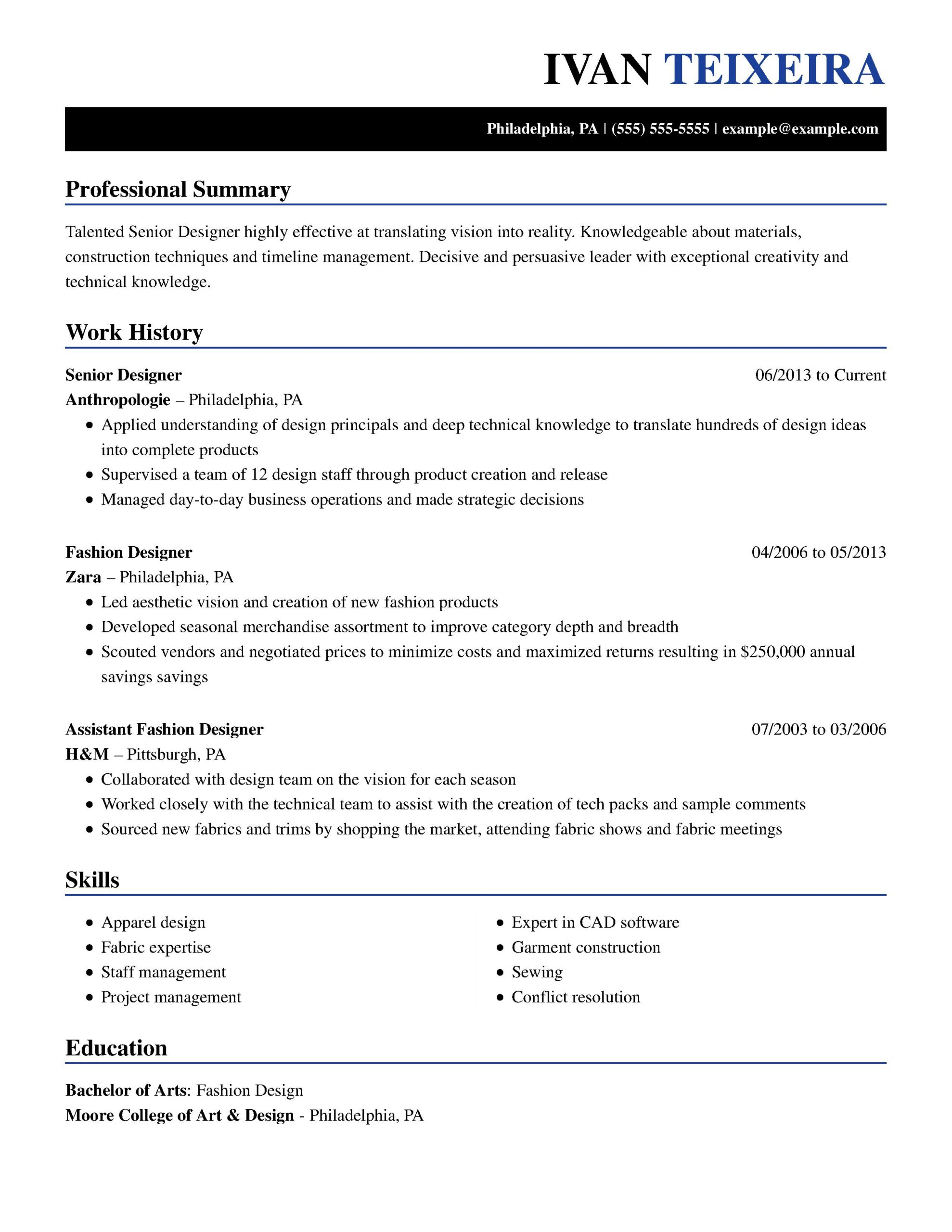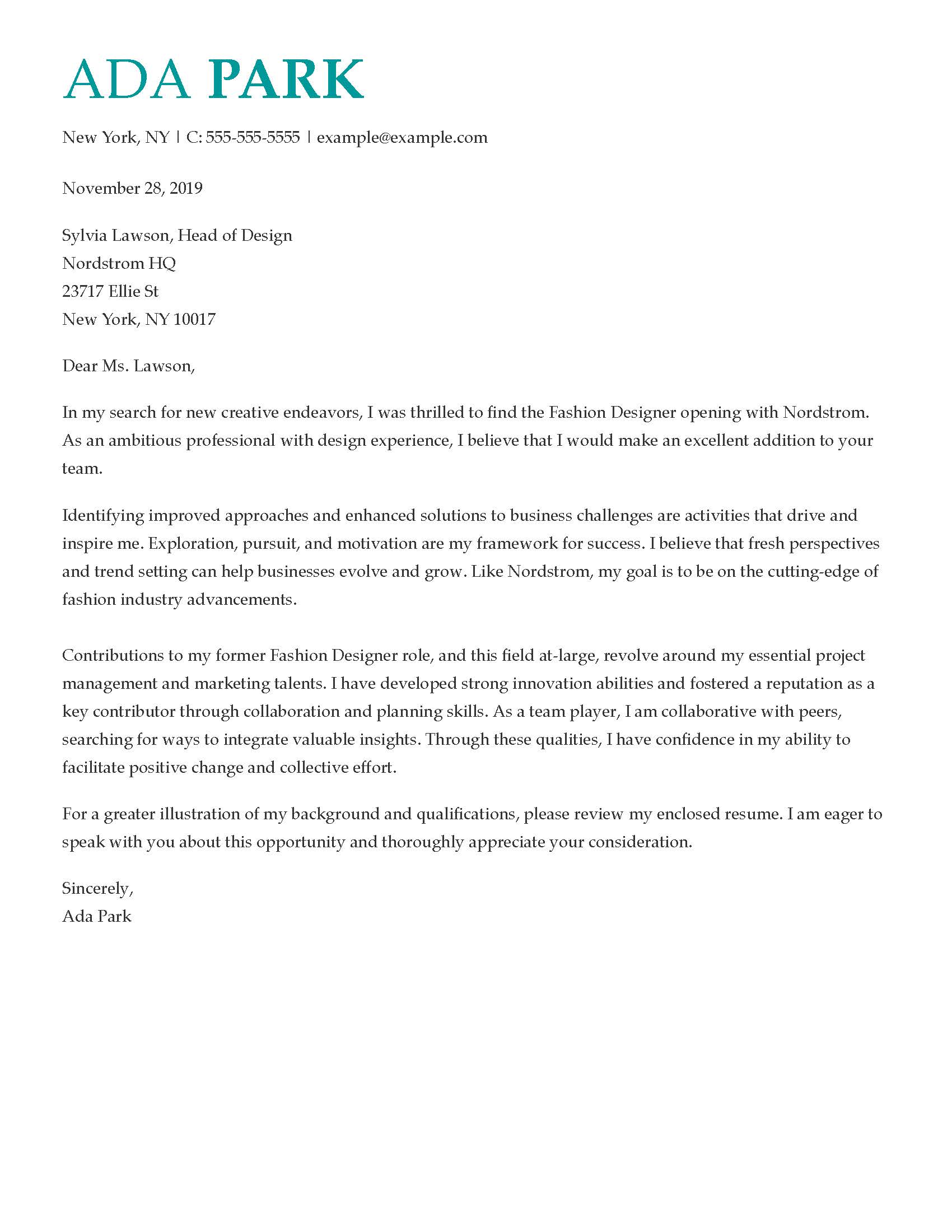Fashion Intern
This job seeker may not have held a full-time position in the fashion industry, but she circumvents her lack of experience by highlighting transferable skills she gained in past jobs. She uses a functional resume format to focus attention on the skills she has acquired in both design and communication to prove herself capable of becoming a key member of a team. Additionally, by highlighting skills paralleling those common in the fashion industry, she creates a well-rounded resume appropriate for an entry-level position.
Build My Resume
